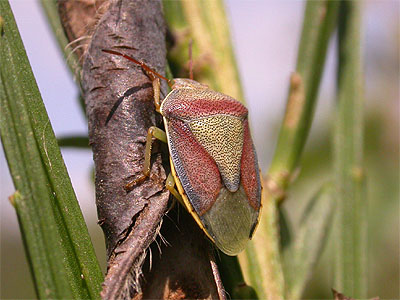 |
| Photo: Mandy Leivers |
| mleivers@bristolzoo.org.uk. Booking is essential for all events. |
Meanwhile, if you didn't manage to get a place on the Animal Adventures activity session, why not do your own exploring. At this time of year there's lots of wildlife about so you could go on a shieldbug hunt, be a snail detective or a spider spotter. You'll need to look carefully as lots of wildlife is very good at hiding. Camouflage is a great way of protecting yourself if you're very small and vulnerable to predators. Shield bugs are common in gardens and have a distinctive body shape but can be hard to spot as they are well camouflaged amongst the plants that they like to eat. You can find out more about the different species and their behaviour on this brilliant Nottinghamshire based invertebrates website. For example, did you know that the Common Green shieldbug turns brown in winter and the Hairy Shieldbug hides in dead leaves with 7-spot ladybirds?
 |
| photo:Gorse Shieldbug http://www.eakringbirds.com |
Spiders are fascinating too. All spiders are carnivorous and inject poison into their victims with a pair of sharp fangs. The poison contains digestive fluids which turns the insides of their victims into a kind of soup which the spider then drinks, leaving just an empty skin.Many spiders spin webs to catch their prey but some go out hunting, using bristly hairs on their body and legs to pick up movements and then pouncing on their prey. Spiders do come in an amazing array of patterns, colours and sizes though so print out your chart and see how many you can find!

No comments:
Post a Comment